Condensers for water cooled chillers. In this article we are going to be looking at the condenser of a chiller. The condenser is located between the compressor and the expansion valve. Hot, high pressure refrigerant vapour enters the condenser and liquid refrigerant exits the condenser.
Scroll to the bottom to watch the YouTube tutorial on chiller condensers
The condenser usually isn’t insulated. The heat within the condenser is unwanted and is just going to be rejected out to atmosphere. So if it looses some heat in the plant room, it doesn’t really matter in most instances. However, if the plant room is being cooled by refrigeration as well, then it makes perfect sense to insulate this and reject all the heat out into the building, but if the plant room is just being cooled by outside ambient air, then it doesn’t matter.
What does the condenser do?
The condenser is collecting all the unwanted heat from the building and transferring it over into the condenser water loop where it will be rejected from the building via the cooling tower.
The unwanted heat of the building enters the evaporator and the refrigerant takes this to the compressor to pack it tightly together. That heat is then transported through the compressor and over into the condenser. The condenser then picks up that heat, and transfers it from the refrigerant and into the water which circulates around the condenser water loop. The refrigerant and water never meet or mix, they are always kept separated by a metal wall, only heat transfers between them.
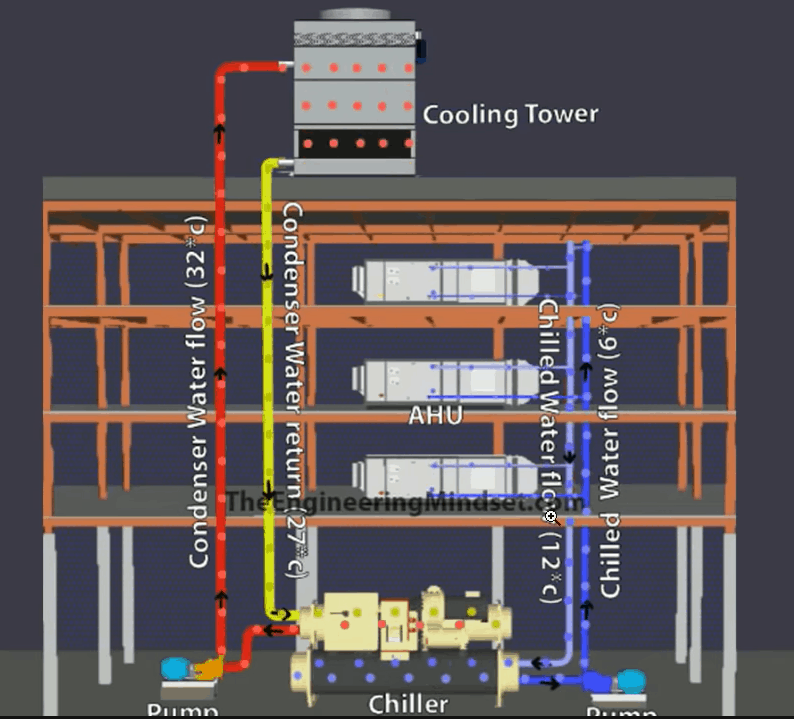
The condenser water is pumped up to the cooling tower. The cooling tower is usually located on the roof and it rejects that heat from the condenser water and into the ambient air, thus the condenser water cools down and the atmospheric air warms up.
Once the condenser water has cooled down, it returns then at a much cooler temperature ready to pick up more heat from the condenser again. The condenser water is flowing out at about 32 degrees Celsius (90 degrees Fahrenheit), and it’s returning at 27 degrees Celsius (81 degrees Fahrenheit).
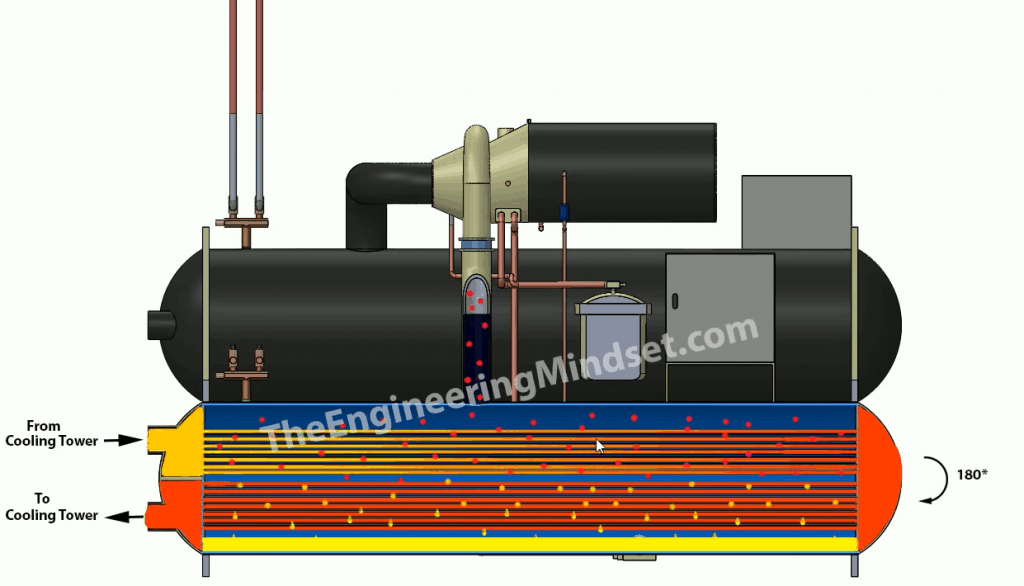
Under the shell of the condenser we have multiple tubes inside. These run from one end to the other. Depending on the design the condenser water will either flow straight through all the tubes or it will flow in through half of them and then do a U turn and come back out the same end. This is to increase efficiency and reduce the size.
The tubes contain the condenser water. On the outside of the tubes is the refrigerant which is coming from the compressor. The two fluids are always separated by the tube wall. They’re completely isolated from each other.
The condenser water is coming from the cooling tower, into the condenser via the inlet on the “water box” (The end cover). The water box section is removable is taken off for cleaning of the tubes. The condenser water flows through the tubes to the very end, hits the other water box at the end, does a 180 degree turn, comes back through the tubes and back out the first water box.
There’s a baffle between the inlet and outlet on the first water box. This is just there to separate and divert the flow into the correct tubes.
Hot compressed refrigerant is going to come out of the compressor and start to fill this void within the condenser. The hot refrigerant vapour will fill the space between the tubes containing the condenser water.
As the hot refrigerant comes into contact with the cooler surface of the condenser tubes, the refrigerant is going to condense into a liquid on the tubes surface. As it does so the heat will transfer through the tube wall and into the refrigerant.
The condenser water runs through the condenser, hits the end water box, does a 180 degree turn and comes back through, still picking up the last heat it can to the maximum efficiency. Meanwhile the liquid refrigerant collects as a liquid at the bottom of the condenser. It will leave here through the bottom and flows into the expansion valve. The heated condenser water will now head off to the cooling tower.
When the refrigerant exits the compressor and heads down into the condenser, it needs to be at a much higher temperature than the return (incoming) condenser water that’s coming back from the cooling tower. The condenser water enters at around 27 ° C (81 ° F) so the refrigerant needs to be a greater temperature than this.
If the refrigerant is the same temperature as this return condenser water then the chiller will not be able to reject any heat that’s been picked up in the building, and so the building will be unable to cool down.
Equally if the cooling tower is unable to reject the heat that’s being sent up to it, then it’s going to return at the same temperature. E.g. if it’s going up at 32 degrees Celsius, and the cooling tower is unable to reject this heat, (perhaps there is recirculation happening or the water is just dumping instead of spraying, or there’s a problem with the baffles) and the water is just returning straight back down into the condenser, then you will not be able to reject any heat from the compressor and it will eventually cause the chiller to trip on high pressure.
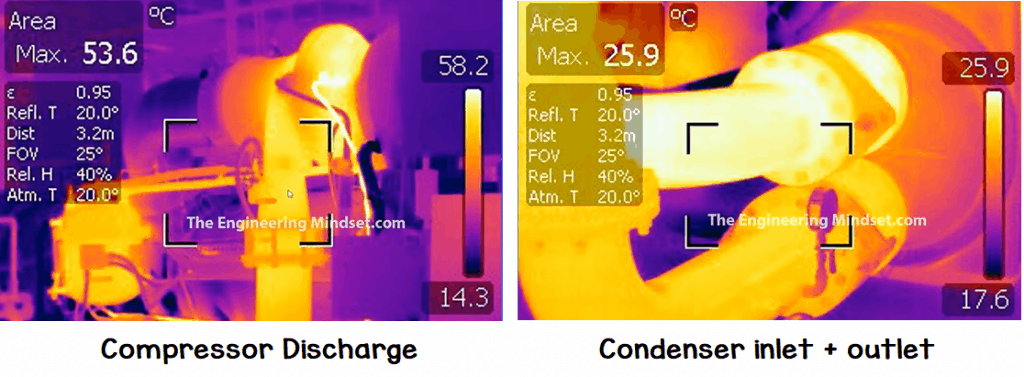
Above you can see two thermal images of a chiller. The left image in the discharge line coming out of the compressor, the centrifugal compressor is on the top and the hot compressed refrigerant is exiting via the discharge line, into the condenser. You can see that it’s going to be around 55 degrees celsius.
The right thermal image, shows the inlet and outlet of the condenser of the chiller. You can see that the water is coming back from the cooling tower at around 17.6 degrees Celsius and it’s exiting at 25.9 degrees Celsius to head back up to the cooling tower.
You should have noticed that these figures are a slightly different temperature range than in the schematic which we were looking at earlier. That’s just because the schematic is showing design figures at a high loading, whereas this is actual figures from a lower loading. There will always be a difference between design and actual. That depends on the cooling load on the chiller and the outside ambient temperature.
Now, with this type of cooling tower where the condenser water enters in and then is sprayed through the cooling tower to get rid of that heat to reject and dissipate it into the atmosphere this is an open system whereas this loop here is a closed system this loop here is an open system so the water is sprayed and air and dirt etc. can get into this system. And what comes into this system gets sent down into the condenser.
There are two types of cooling towers used, open circuit and closed circuits. Open circuits are the most common, they spray the hot condenser water into the ambient air which effectivly cools the water down using the latent heat of evaporation.
This presents a problem though, because we get an effect known as fouling occurring on the inside of the condenser water pipework and the condenser heat exchanger.
Dirt and other particles will collect on the surfaces of the pipes and heat exchanger and will form a layer of insulation.
This build-up is basically small deposits of salt, scale, dirt, mineral build-up and also bacterial growth. As I said it insulates the pipe which reduces the chillers efficiency and cooling capacity. This can be treated with a rigorous chemical dosing regime. Unfortunately this by itself will not be enough to stop it, it will just be enough to reduce it or mitigate it. Alternatively, you can get some specialists to come in and clean it off.
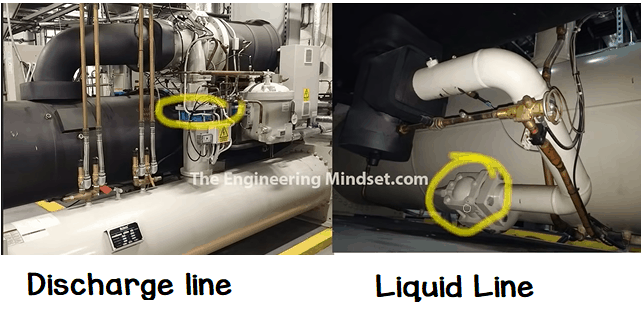
On the chiller discharge and liquid line we’re going to find two large valves. These can be shut and used to isolate all the refrigerant within the condenser. So if you need to take this apart the refrigerant can all be pumped and moved into the condenser and these can be sealed to keep all that refrigerant inside. DO NOT TOUCH THESE UNLESS AUTHORISED

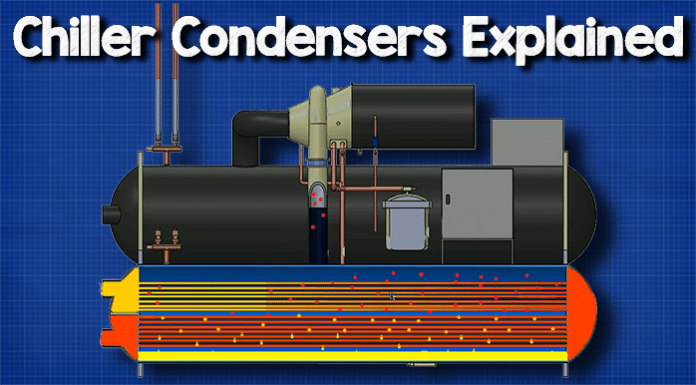



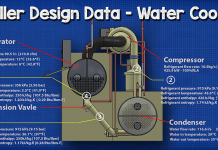
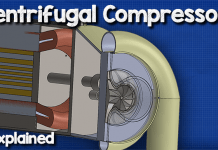
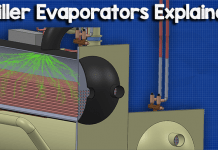


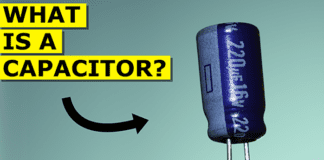

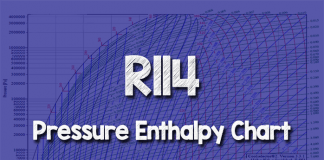
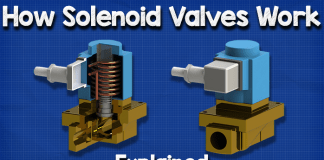








Thanks Paul. Great explanation.
[…] components. The compressor, which is the driving force of the refrigerant around the system. The condenser which removes the unwanted heat from the system and send this to the cooling tower. The expansion […]
[…] Learn how condensers work here […]
Hello
I have a data sheet for a chiller-condenser. Whom should I send it to?
Regards,
Nissan Abadi
The condenser water is pumped up to the cooling tower. The cooling tower is usually located on the roof and it rejects that heat from the condenser water and into the ambient air, thus the condenser water cools down and the atmospheric air warms up.
“As the hot refrigerant comes into contact with the cooler surface of the condenser tubes, the refrigerant is going to condense into a liquid on the tubes surface. As it does so the heat will transfer through the tube wall and into the refrigerant.”
“… and into the refrigerant.”
sounds an error…